The Design and Data Analysis of an Underwater Seismic Wave System
Abstract
1. Introduction
2. The Overall Design of the Seismic Wave Detection System
- It employs the parallel deployment of a cable and a rope to connect the surface data transmission buoy with the subsea watertight instrument enclosure. The cable handles real-time data transmission, while the rope assumes the primary mechanical load. During equipment retrieval, this configuration establishes a redundant mechanical load path, effectively preventing fracture risks caused by single-cable stress concentrations and significantly enhancing system retrievability.
- It requires only a rope to anchor and connect the surface data transmission buoy to the subsea watertight instrument enclosure. An underwater acoustic modem enables subsea positioning, status confirmation, and controlled separation via designated release mechanisms.
2.1. The Watertight Instrument Enclosure
2.2. Geophones
2.3. Underwater Acoustic Communicator
2.4. Data Transmission Radio Communication Buoy
- It is equipped with a built-in data transmission radio (frequency: 223–235 MHz) to enable wireless communication capabilities;
- It incorporates a large-capacity rechargeable lithium battery pack (22.2V@32Ah), which can meet the long-term operational requirements of users;
- It is equipped with a mechanical watertight switch, enabling the convenient on/off control of the equipment.
2.5. Host Computer Data Processing Module
2.5.1. Adaptive Spectral Line Enhancer
2.5.2. Spectrum Analysis and Peek Detection Mathematical Modeling
- Left/right valley localization:
- 2.
- Reference baseline determination:
- 3.
- Salience calculation:
- Peak candidate identification: Traverse all k values, and mark k as a peak candidate if and .
- Salience thresholding: Retain only peaks satisfying , where , .
2.5.3. Noise Envelope Signal Recognition (DEMON)
- Original signal: The modulated single-frequency carrier signal is defined as follows:where m(t) represents the low-frequency signal, and ωc denotes the carrier frequency.
- Hilbert transform: Perform the Hilbert transform on s(t):
- 3.
- Construct the analytic signal by combining the original signal and its Hilbert transform:
- 4.
- Down conversion for low-frequency signal extraction: Multiply the analytic signal by the complex exponential :
2.5.4. Low-Frequency Analysis (LOFAR)
3. Experiment and Signal Analysis
3.1. Experiment on Receiving Ultra-Low-Frequency Signal Sources
3.2. Sea Trials and Host Computer Data Analysis
3.2.1. Experimental Methods and Data Acquisition
3.2.2. Sea Trial Data Recovery
- Instrument deployment: Anchor the underwater instrumentation module’s housing to the seafloor. An acoustic release ensures vertical stability.
- Time synchronization: Use the Beidou satellite timing module (accuracy of ±1 μs) to synchronize the time between the acquisition node and the buoy.
4. Conclusions
Author Contributions
Funding
Institutional Review Board Statement
Informed Consent Statement
Data Availability Statement
Conflicts of Interest
References
- Fei, P.; Li, J.; Wang, X. Modelling and Calculation of Seismic Wave Field Caused by Moving Ship. J. Phys. Conf. Ser. 2021, 1748, 022017. [Google Scholar]
- Thomson, J.; Yang, J.; Taylor, R.; Rainville, E.J.; Zeiden, K.; Rainville, L.; Brenner, S.; Ballard, M.; Cronin, M.F. Surface Wave Development and Ambient Sound in the Ocean. J. Geophys. Res. Ocean. 2024, 129, e2024JC021921. [Google Scholar] [CrossRef]
- Liu, X.; Xia, Z.; Li, Q. Acoustic Characteristic Measurement Model for Ocean Ambient Noise Sources. Ocean Eng. 2024, 311, 118874. [Google Scholar] [CrossRef]
- Li, W.; Zhang, H.; Wang, L. Pankun: A New Generation of Broadband Ocean Bottom Seismograph. Sensors 2023, 23, 4995. [Google Scholar] [CrossRef]
- Gehrels, M.J.P.C.; Collier, T.S.; van Eijk, S.J.L.; van der Meer, D.J.A.; van der Veen, H.J.A.M. Seismic Detection with Telecommunication Optical Fibers. Science 2018, 362, 1188. [Google Scholar]
- Wang, X.; Piao, S.; Lei, Y.; Li, N. Design of an Ocean Bottom Geophone Sensor: Minimize Vibration Experienced by Underwater Low-Frequency Noise. Sensors 2018, 18, 3446. [Google Scholar] [CrossRef]
- Tikhotskiy, S.; Bayuk, I.; Dubinya, N. On the Possibility of Detecting Pore Pressure Changes in Marine Sediments Using Bottom Geophone Data. J. Mar. Sci. Eng. 2023, 11, 1803. [Google Scholar] [CrossRef]
- Romano, F.; Gusman, A.R.; Power, W.; Piatanesi, A.; Volpe, M.; Scala, A.; Lorito, S. Tsunami Source of the 2021 MW 8.1 Raoul Island Earthquake from DART and Tide-gauge Data Inversion. Geophys. Res. Lett. 2021, 48, e2021GL094449. [Google Scholar] [CrossRef]
- González, F.I.; Milburn, H.B.; Bernard, E.N.; Newman, J. Deep-Ocean Assessment and Reporting of Tsunamis (DART®). Brief Overview and Status Report. Available online: https://www.ndbc.noaa.gov/dart/brief.shtml (accessed on 25 June 2025).
- Zou, J.; Wu, N.; Zhang, S.; Ma, H.; Chu, D. Design of the Photoelectric Detection Circuit for a Multichannel Nutrient Sensor in Seawater. In Proceedings of the 9th International Conference on Intelligent Computing and Signal Processing, Xi’an, China, 19–21 April 2024; pp. 1637–1641. [Google Scholar]
- Xu, P.H.; Gao, C.L.; Xiong, S.H.; Mu, Y.Z. Research on Target Detection Algorithm for Seismic Wave Sensor Array in Fluctuating Background Noise. Nanjing Eng. Coll. J. (Nat. Sci. Ed.) 2023, 21, 7–13. (In Chinese) [Google Scholar]
- Zhang, H.W.; Zhao, S.; Zhu, R.T. Marine Oil Platform Oil Pollution Pump Mechanical Seal Flush System Reconstruction Technology. China Pet. Chem. Stand. Qual. 2024, 44, 160–162. (In Chinese) [Google Scholar]
- Wang, Z.T. Fault Analysis and Improvement Research on Shaft Seal of Water Injection Booster Pump on Offshore Platform. Equip. Manag. Maint. 2024, 3, 166–170. (In Chinese) [Google Scholar]
- Zhu, S.F.; Wang, X.P.; Tian, J.L. Analysis of Control Measures for Austenitic Stainless Steel Materials in Marine Oil and Gas Pipelines. China Pet. Chem. Stand. Qual. 2022, 42, 38–40. (In Chinese) [Google Scholar]
- Chen, H.; Zhou, X.J.; Wu, J.; Zheng, P.H.; Chen, Z.J. Molecular Dynamics Simulation Study on Pitting Mechanism of Stainless Steel in Marine Atmospheric Environment. In Proceedings of the 11th National Corrosion and Protection Conference, Wuhan, China, 26–29 November 2021; pp. 844–845. (In Chinese). [Google Scholar]
- Ohta, K.; Matsumoto, S.; Okabe, K.; Asano, K.; Kanamori, Y. Estimation of Shear Wave Speed in Ocean-Bottom Sediment Using Electromagnetic Induction Source. IEEE J. Ocean. Eng. 2008, 33, 233–239. [Google Scholar] [CrossRef]
- Liu, X.; Zhang, Y.; Chen, F.; Wang, R.; Qiao, X. A Sensor Fusion Scheme Integrating Fiber-Optic Geophone and DAS. IEEE Sens. J. 2025, 25, 15102–15108. [Google Scholar] [CrossRef]
- Luo, S.; Li, S.; Tajaddodianfar, F.; Hu, J. Adaptive Synchronization of the Fractional-Order Chaotic Arch Micro-Electro-Mechanical System via Chebyshev Neural Network. IEEE Sens. J. 2018, 18, 3524–3532. [Google Scholar] [CrossRef]
- Liu, X.; Li, X.; Li, S.; Chen, F.; Wang, R.; Qiao, X. A 3 × 3 Phase Demodulation System Based on Active Ellipse Fitting for 3C Fiber-Optic Geophone Array and Field Tests. J. Light. Technol. 2024, 42, 5041–5047. [Google Scholar] [CrossRef]
- Martins, D.P.; Barros, M.T.; O’SUllivan, B.J.; Seymour, I.; O’RIordan, A.; Coffey, L.; Sweeney, J.B.; Balasubramaniam, S. Microfluidic-Based Bacterial Molecular Computing on a Chip. IEEE Sens. J. 2022, 22, 16772–16784. [Google Scholar] [CrossRef]
- Bonnel, J.; Pecknold, S.P.; Hines, P.C.; Chapman, N.R. An Experimental Benchmark for Geoacoustic Inversion Methods. IEEE J. Ocean. Eng. 2021, 46, 261–282. [Google Scholar] [CrossRef]
- Jin, H.; Gao, X.; Ren, K.; Liu, J.; Qiao, L.; Liu, M.; Chen, W.; He, Y.; Dong, S.; Xu, Z.; et al. Review on Piezoelectric Actuators Based on High-Performance Piezoelectric Materials. IEEE Trans. Ultrason. Ferroelectr. Freq. Control 2022, 69, 3057–3069. [Google Scholar] [CrossRef]
- Gu, R.; Qiao, X.; Wang, J.; Cai, C.; Zhang, Z. A Novel Real-Time Self-Monitoring RF MEMS Power Sensor for 0.1–30 GHz Applications. IEEE Sens. Lett. 2024, 8, 3500804. [Google Scholar] [CrossRef]
- Yang, M.; Zhang, H.; Wang, Q.; Chen, T.; Sun, L.; Lin, W.; Duan, S.; Liu, B. Microstructured Optical Fiber Sensor for Detection of Temperature-Dependent Light-Induced Ionic Liquid Molecular Polarizability. J. Light. Technol. 2025, 43, 957–965. [Google Scholar] [CrossRef]
- Potylitsyn, V.; Kudinov, D.; Dmitry, A.; Kokhonkova, E.; Kurkov, S.; Egorov, I.; Pliss, A. Study of the Seismoelectric Effect of the Second Kind Using Molecular Sensors. Sensors 2021, 21, 2301. [Google Scholar] [CrossRef]
- Kamenev, O.T.; Kamenev, A.O.; Petrov, Y.S.; Podlesnykh, A.A. Detection of Weak Seismic Waves in Land–Sea Interface by Fiber-Optic Interferometric Accelerometers. Bull. Russ. Acad. Sci. Phys. 2025, 88, S348–S351. [Google Scholar] [CrossRef]
- Lou, G.; Song, Y.; Man, L.; Sun, Z. A New Method for Detecting Karst and Groundwater by 3D Seismic Wave: Case Study of the Karst Tunnel in Zhangjihuai Railway, China. Bull. Eng. Geol. Environ. 2023, 82, 464. [Google Scholar] [CrossRef]
- Koptelov, Y.S.; Losev, A.S.; Shermakov, V.E.; Ioshin, D.V. Seismic Sensor. Power Technol. Eng. 2024, 57, 896–899. [Google Scholar] [CrossRef]
- Cui, P.; Bai, Z.C. Reflections on Selection about Ship Seismic Sensor. Appl. Mech. Mater. 2014, 687–691, 3175–3178. [Google Scholar] [CrossRef]
- Wu, S.; Wang, X.C.; Hu, Z.Y.; Guan, R. Design of Underwater Acoustic Communication Transceiver for Deep Sea Long-Distance. Electroacoust. Technol. 2023, 47, 20–22. (In Chinese) [Google Scholar]
- Guo, J. Optimal Design of Offshore Communication Buoy—Research on Technical Integration of VHF and Beidou System. Wirel. Internet Technol. 2024, 21, 10–13. (In Chinese) [Google Scholar]
- Zhang, R. Design of a Low-Power Cross-Domain Communication Buoy System. J. Underw. Unmanned Syst. 2024, 32, 724–729. (In Chinese) [Google Scholar]
- Si, J.G.; Feng, H.X.; Su, J.; Tang, S.B.; Zhang, J.X. Research on Shallow Sea Target Detection Based on Seismic Waves at Seabed Interface. Prog. Geophys. 2022, 37, 2596–2603. (In Chinese) [Google Scholar]
- Hao, Y.; Qiu, L.; Chi, C.; Liang, G. Sparsity-Inducing Frequency-Domain Adaptive Line Enhancer for Unmanned Underwater Vehicle Sonar. Appl. Acoust. 2021, 173, 107689. [Google Scholar] [CrossRef]
- Yang, J.; Cheng, N.P.; Ni, S.Y. Performance Analysis of Two-Stage Adaptive Spectrum Line Enhancement Algorithm in Weak Signal Detection. J. Armament Equip. Acad. 2019, 40, 155–160. (In Chinese) [Google Scholar]
- Chen, J.G.; Huang, Y.; Yan, N. Communication Noise Signal Peak Detection System Based on Spectrum Correction. Sci. Technol. Bull. 2021, 37, 33–36. (In Chinese) [Google Scholar]
- Chen, Y.L.; Guo, L.H.; Gong, Z.X.; Liu, J.J.; Zhang, W.Y. Transient Pulse Interference Suppression in DEMON Spectral Analysis. Appl. Acoust. 2025, 219, 109956. [Google Scholar]
- Pan, D.N.; Hu, C.Q.; Zhao, M.; Yang, X.M. Feature Extraction of Phase Difference of DEMON Line Spectrum of Ship Radiation Noise. Acoust. Technol. 2025, 44, 1–11. (In Chinese) [Google Scholar]
- Chen, X.H.; Li, Y.; Zheng, E.M.; Fang, H.; Yang, H. Analysis and Detection of Line Spectrum Characteristics of Speedboat Propeller in Lake Trials. J. Harbin Eng. Univ. 2025, 46, 1–7. (In Chinese) [Google Scholar]
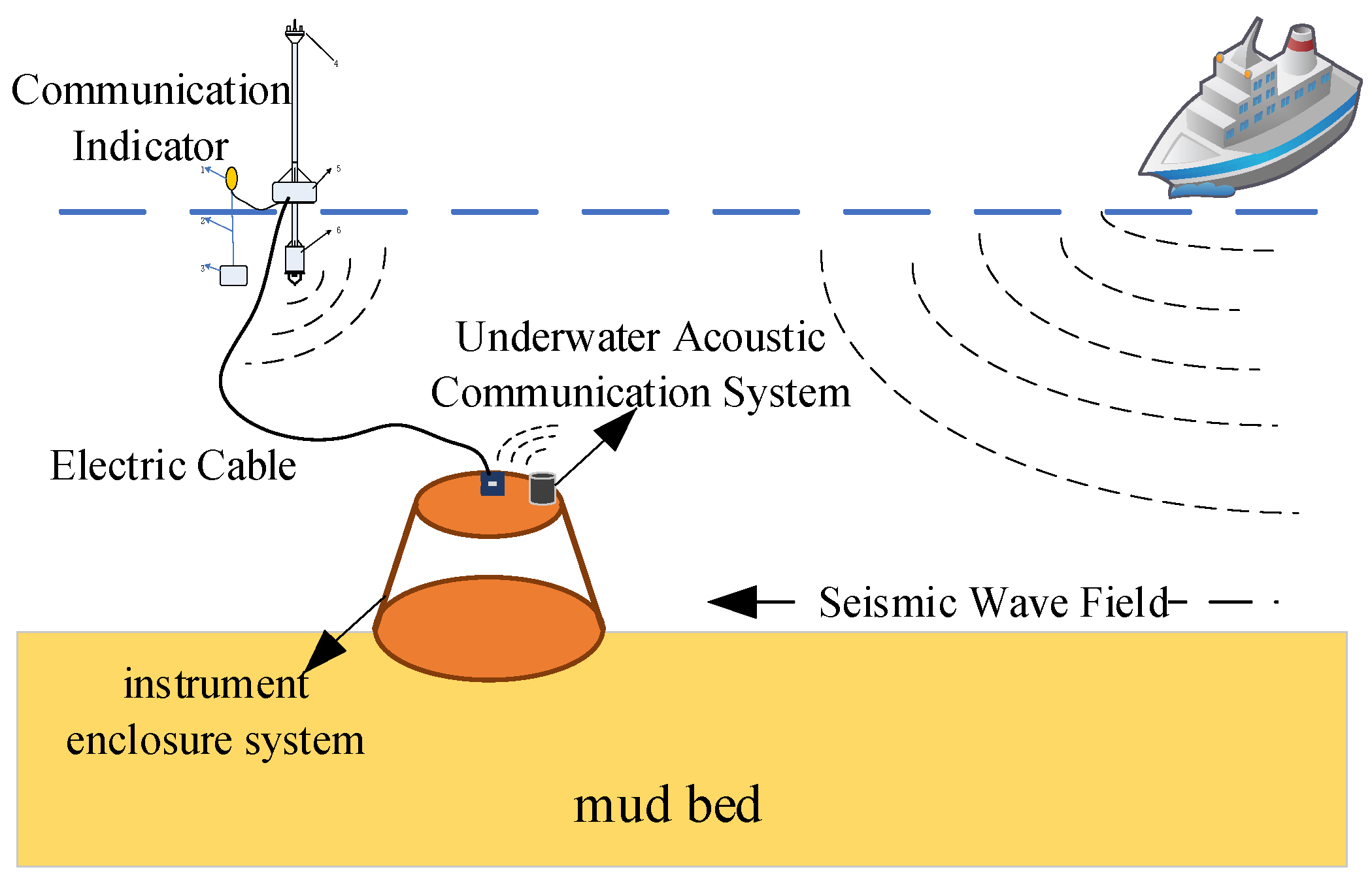
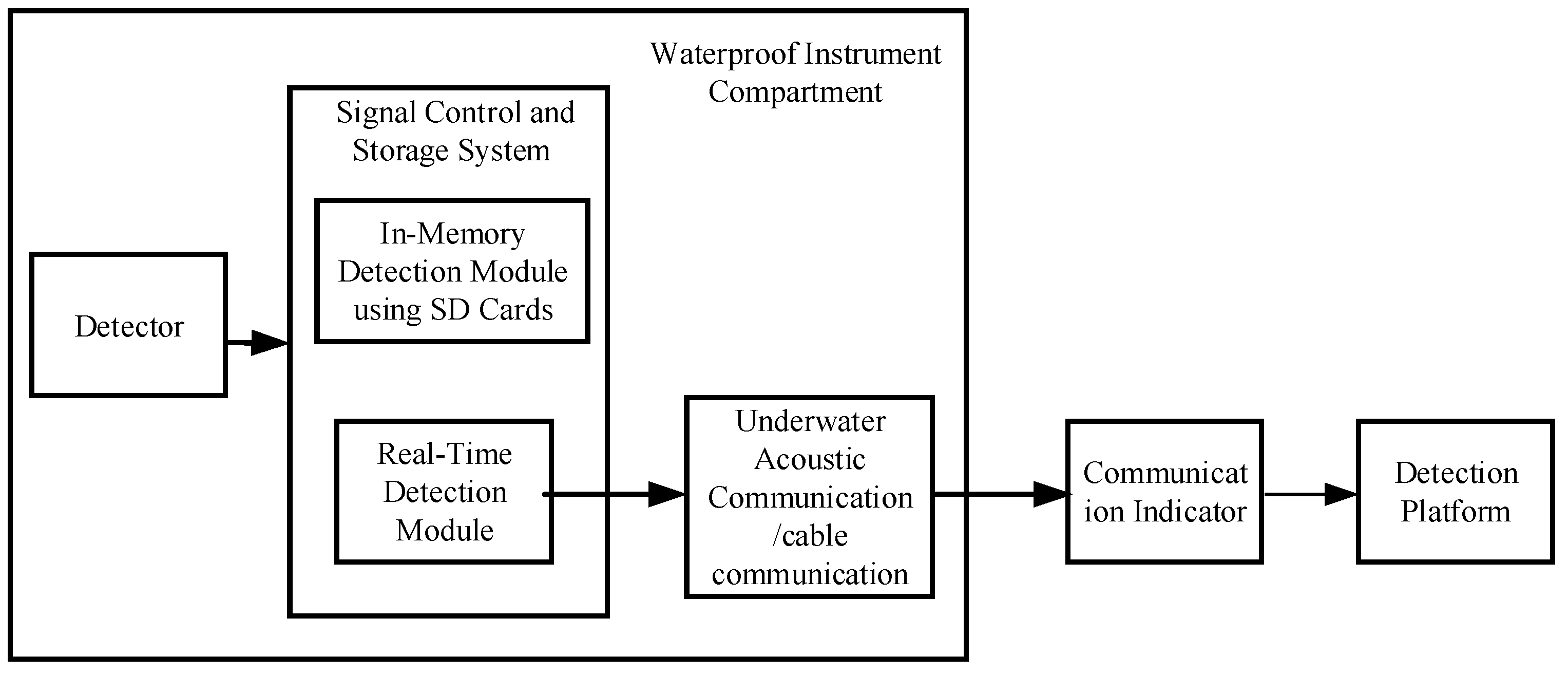
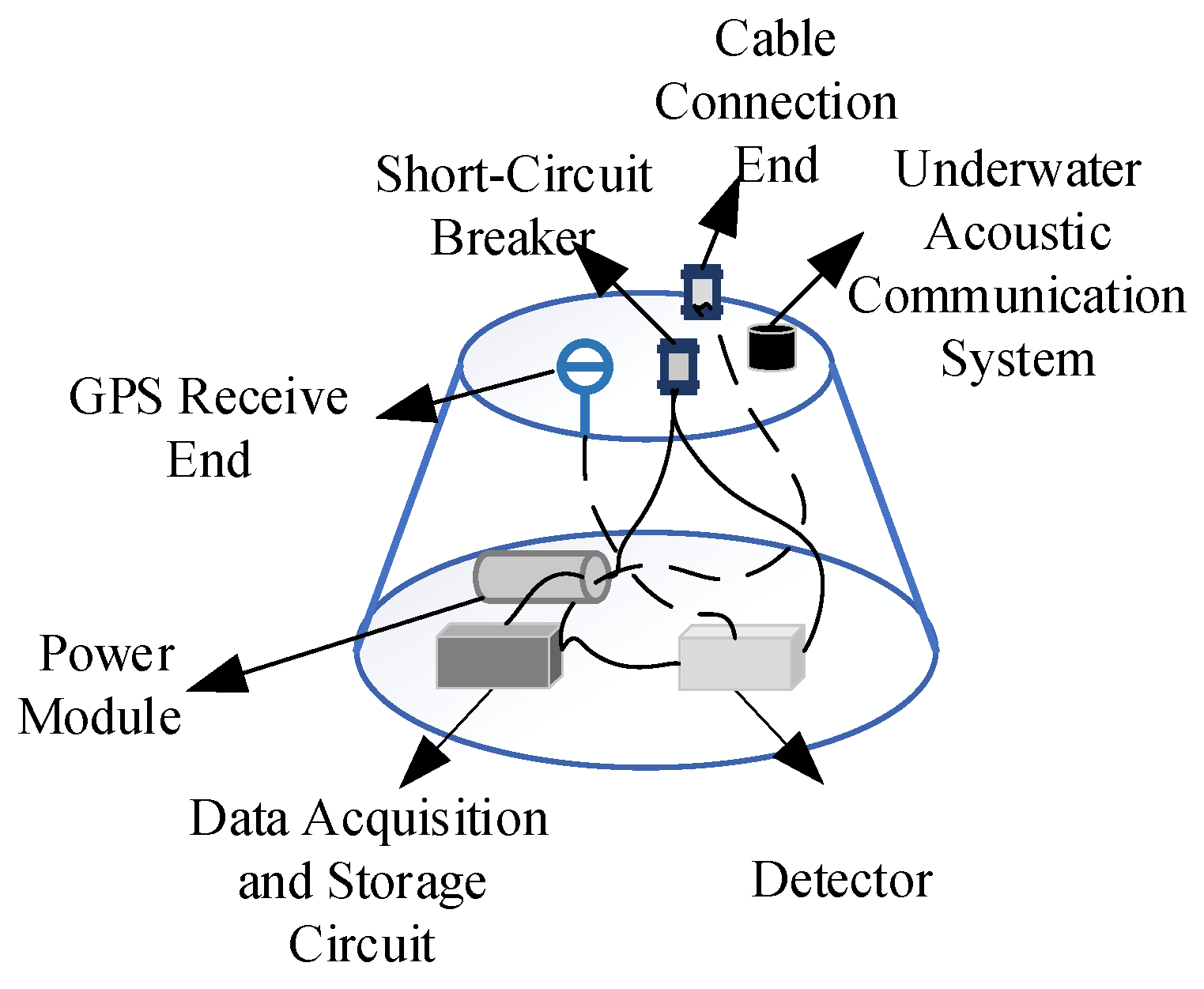
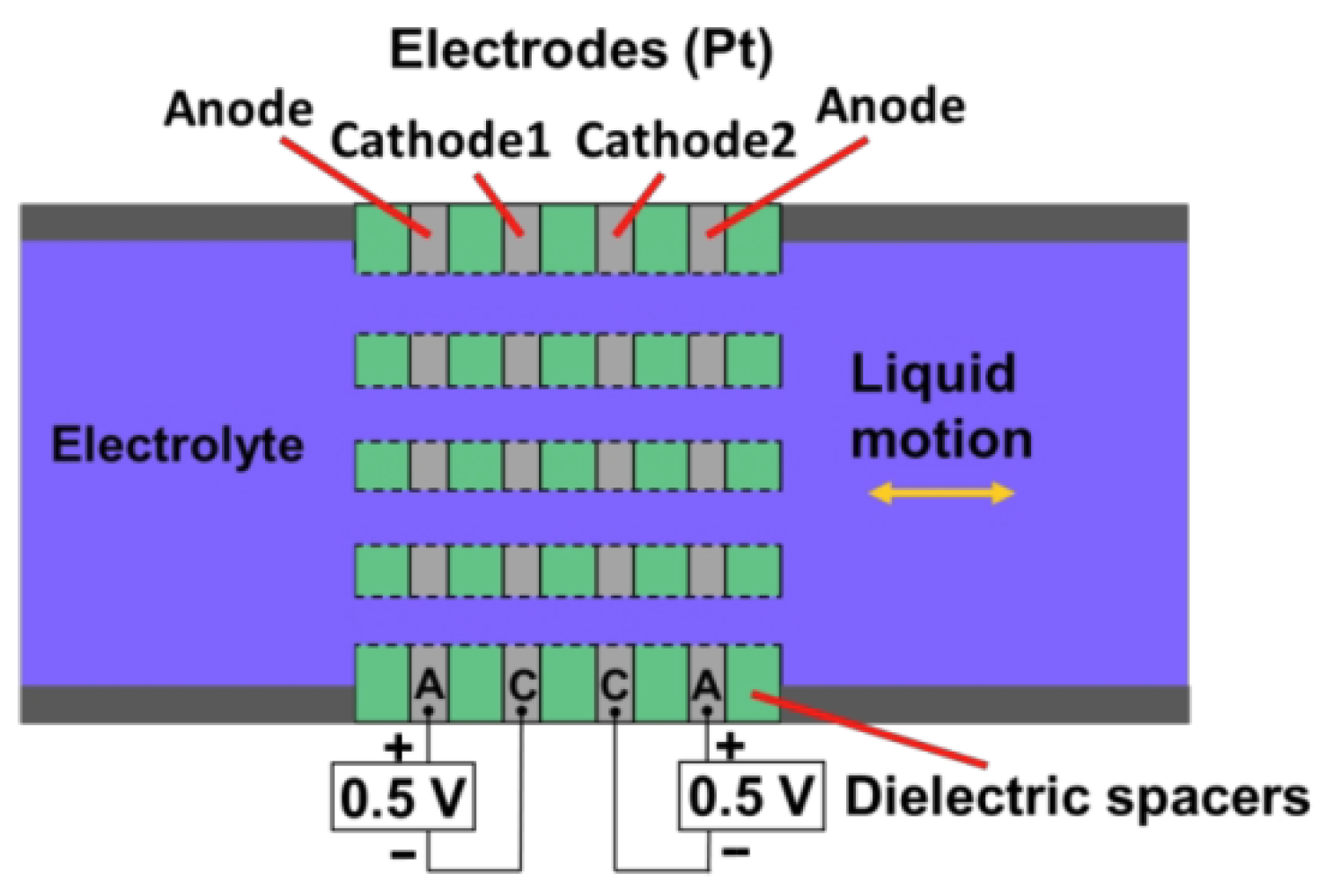
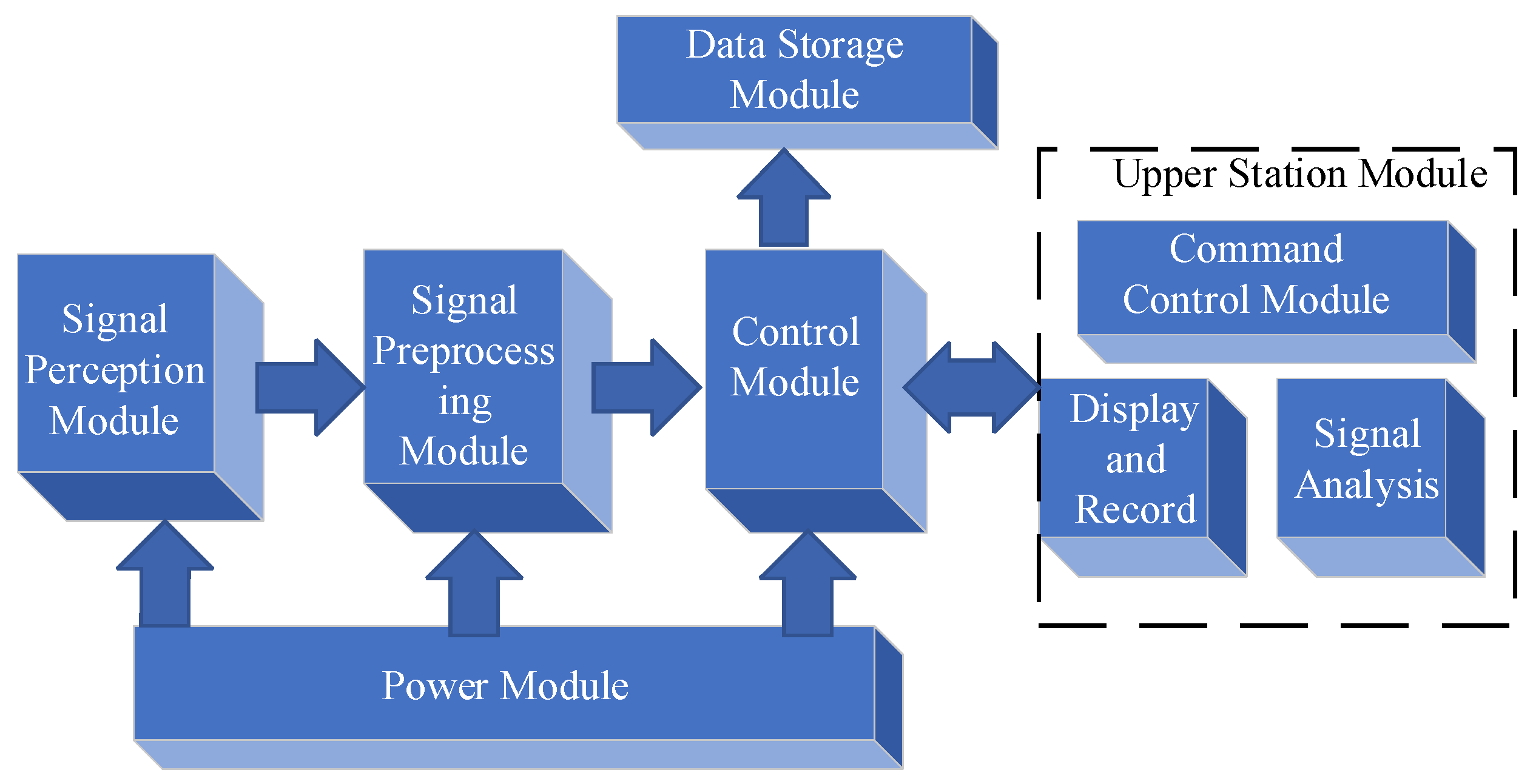


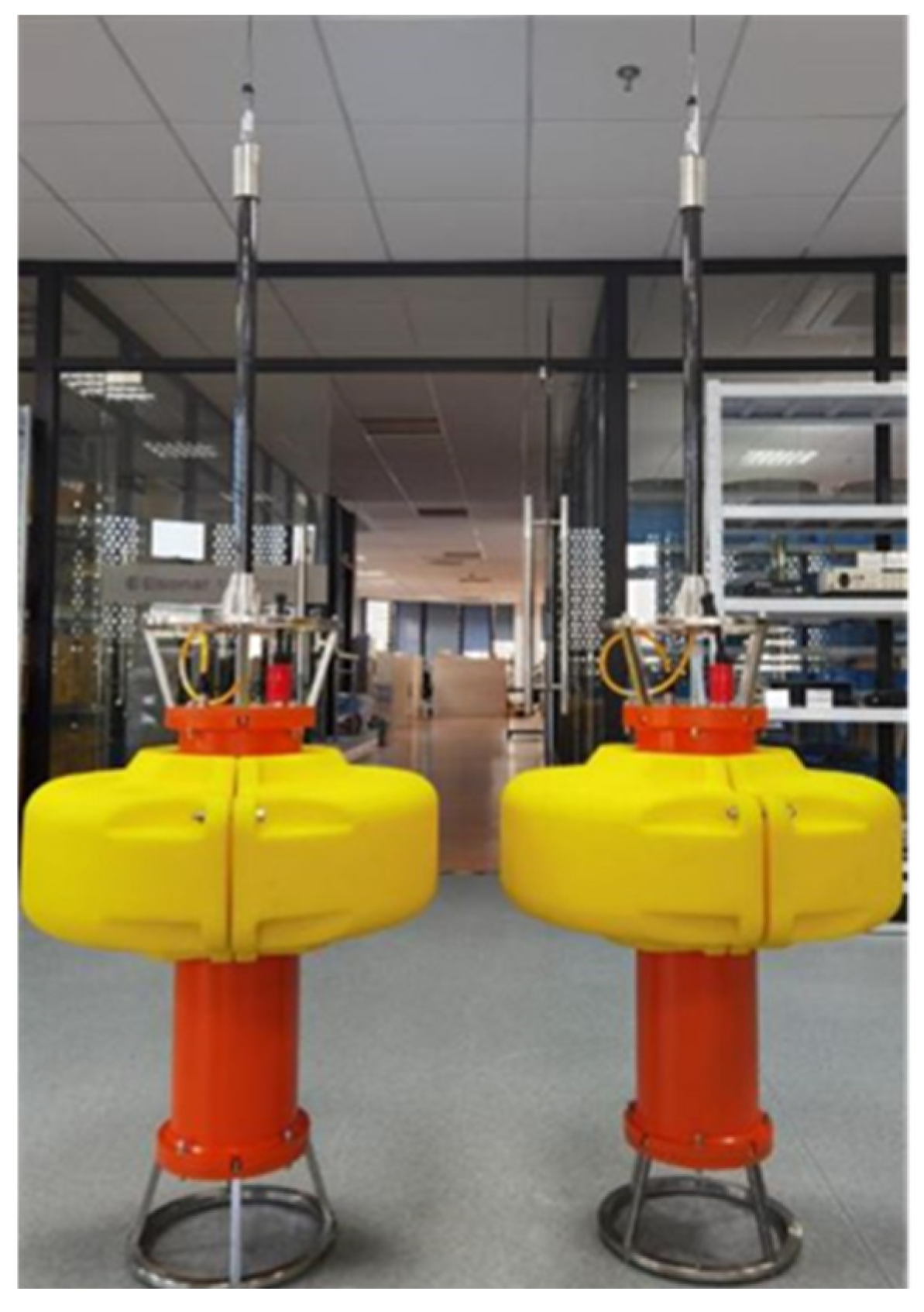

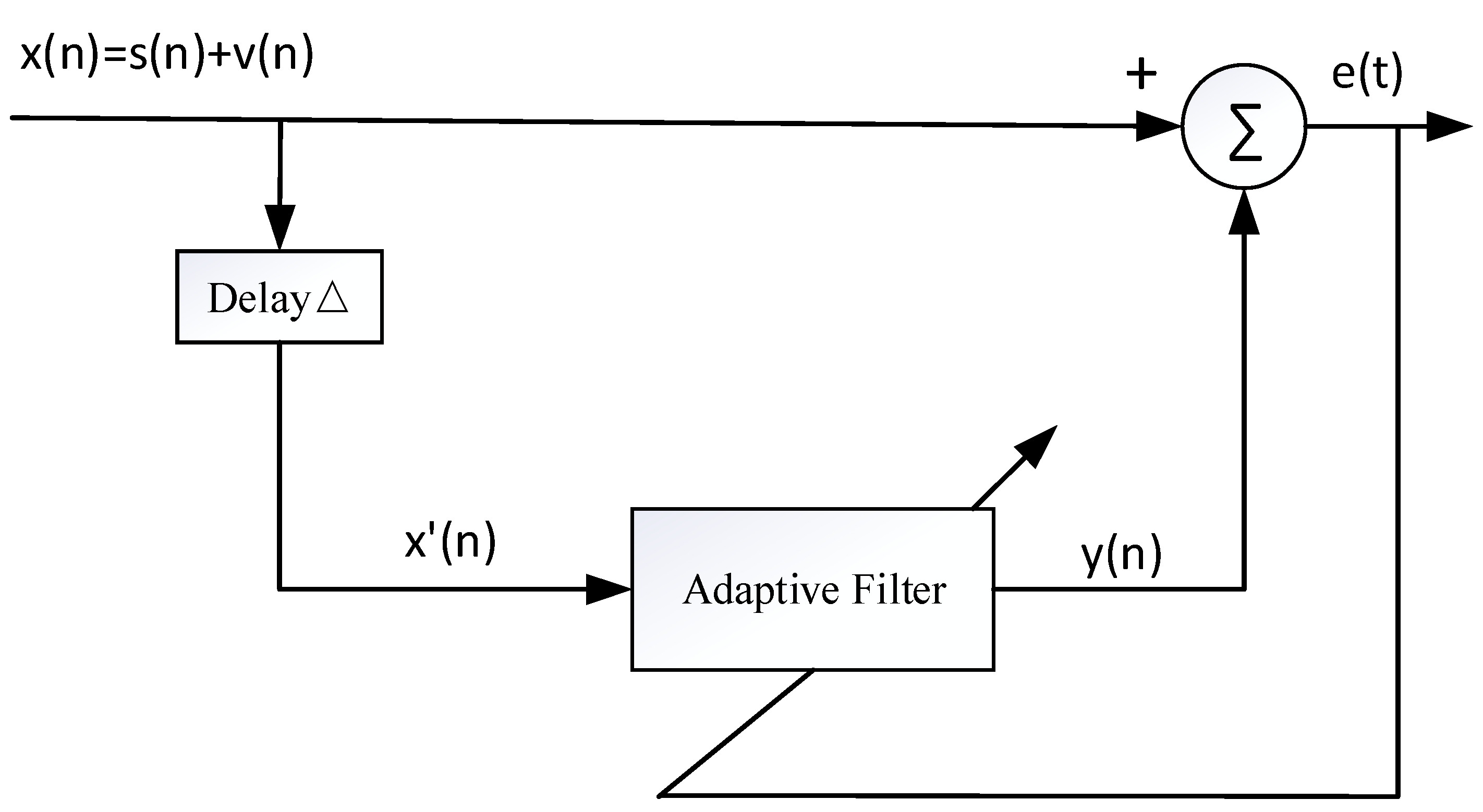

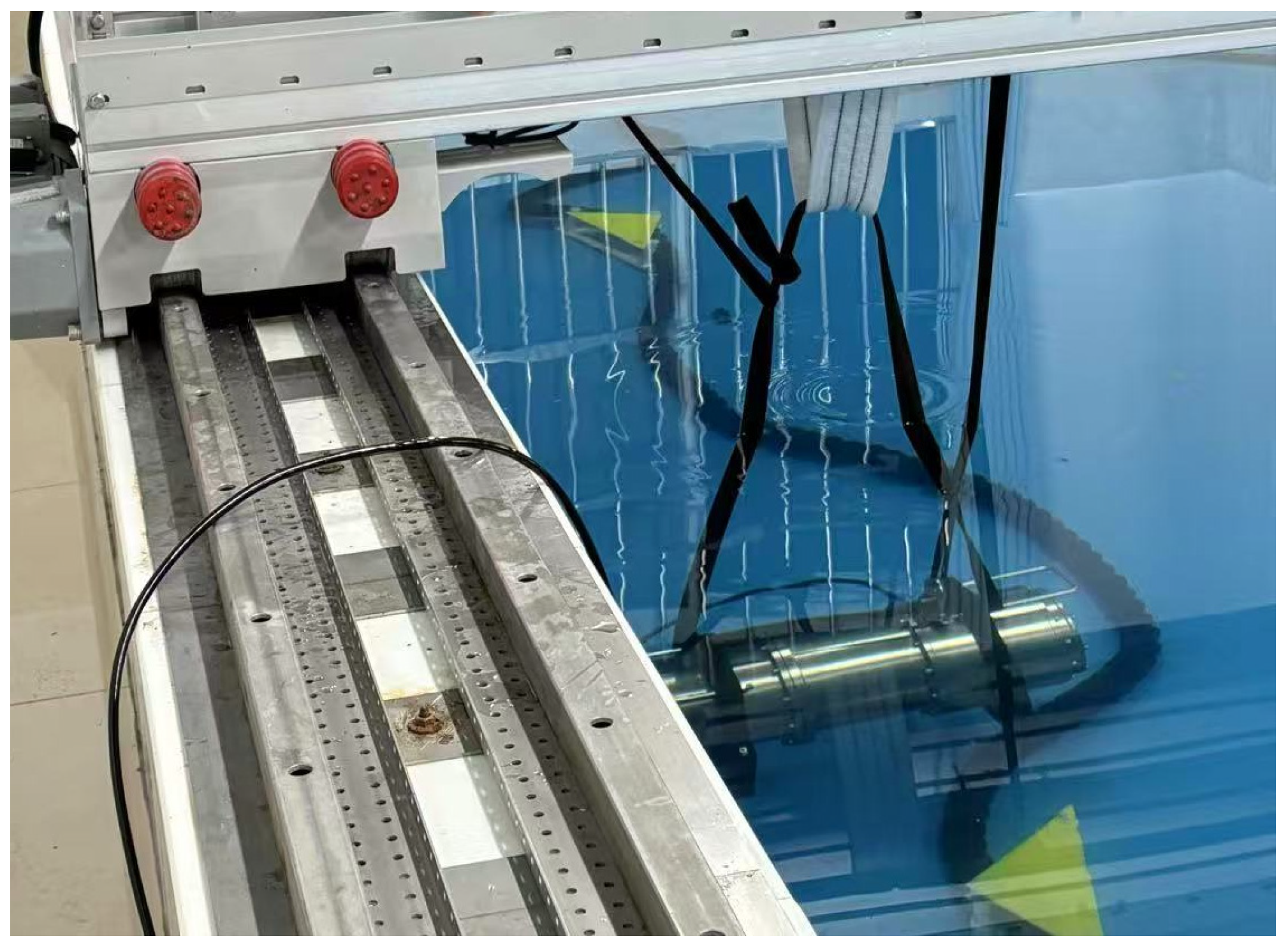


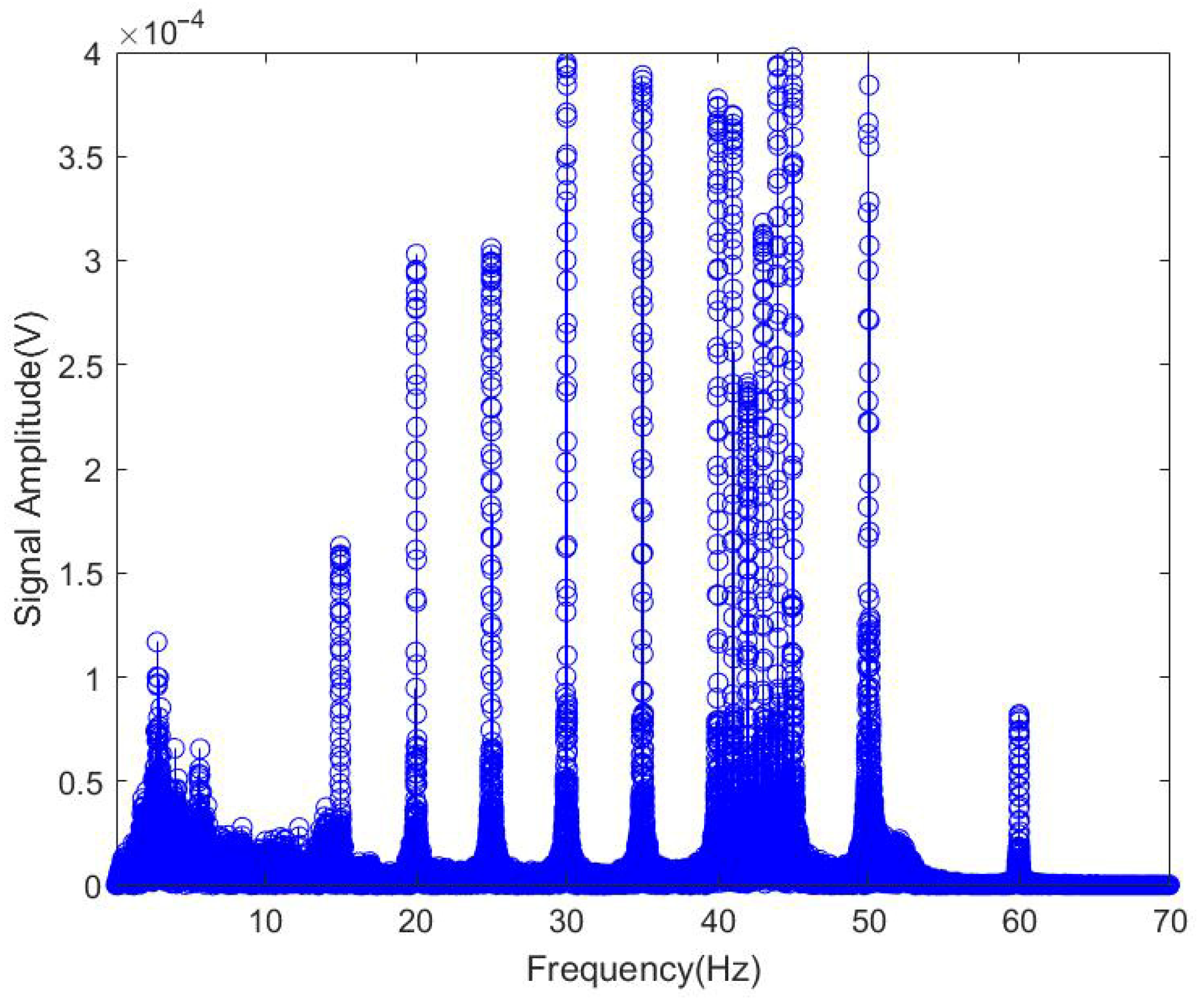



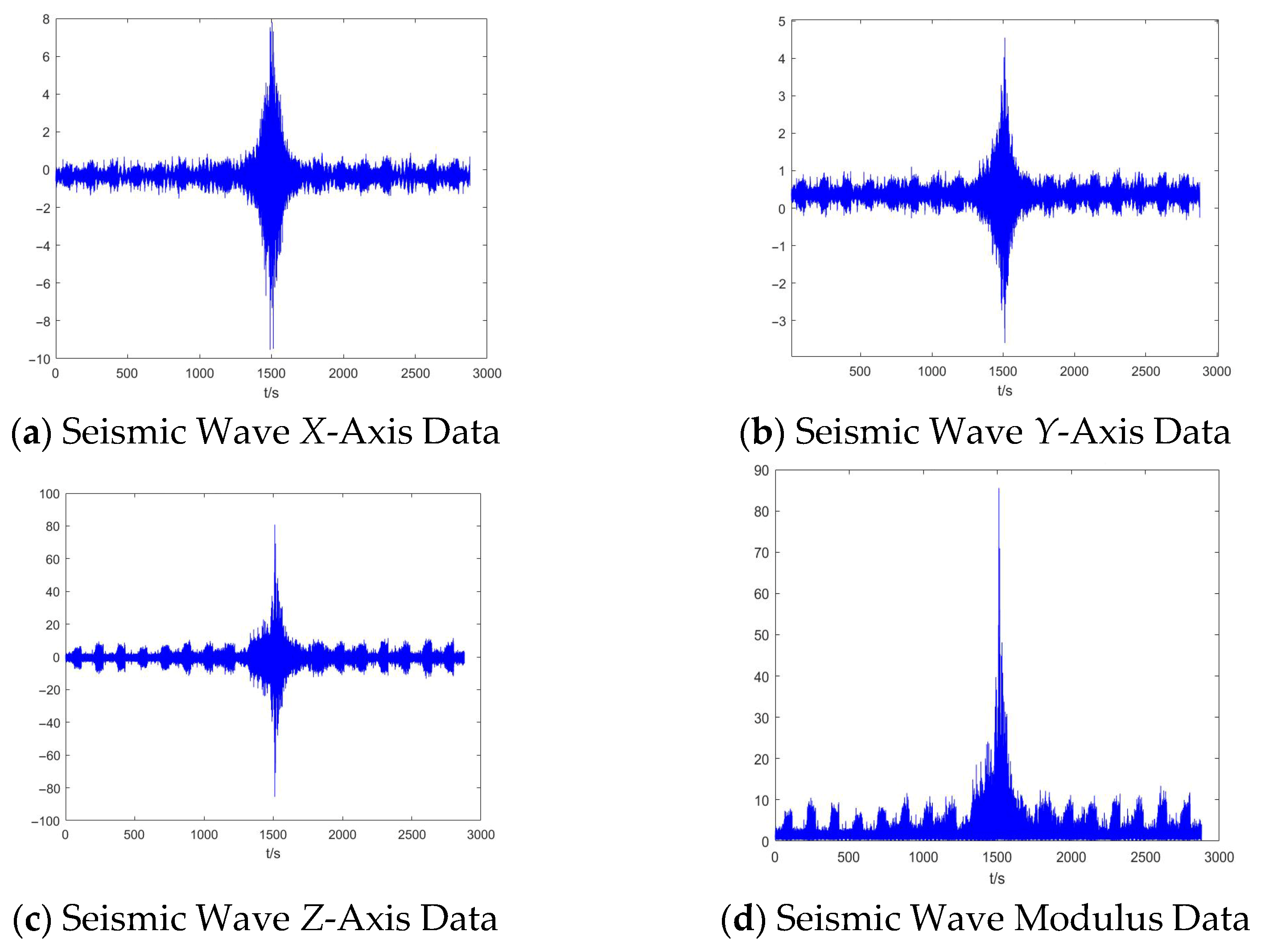
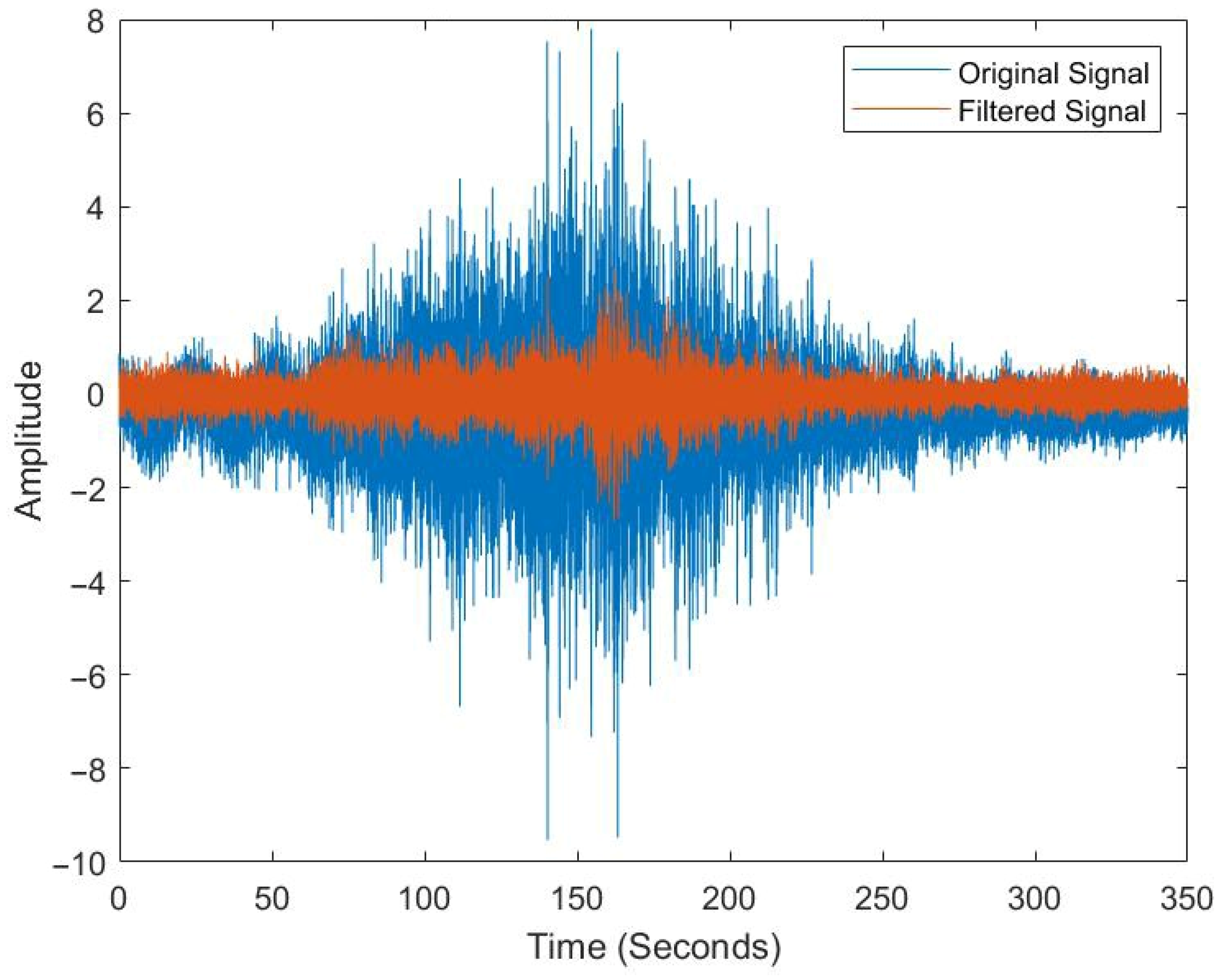
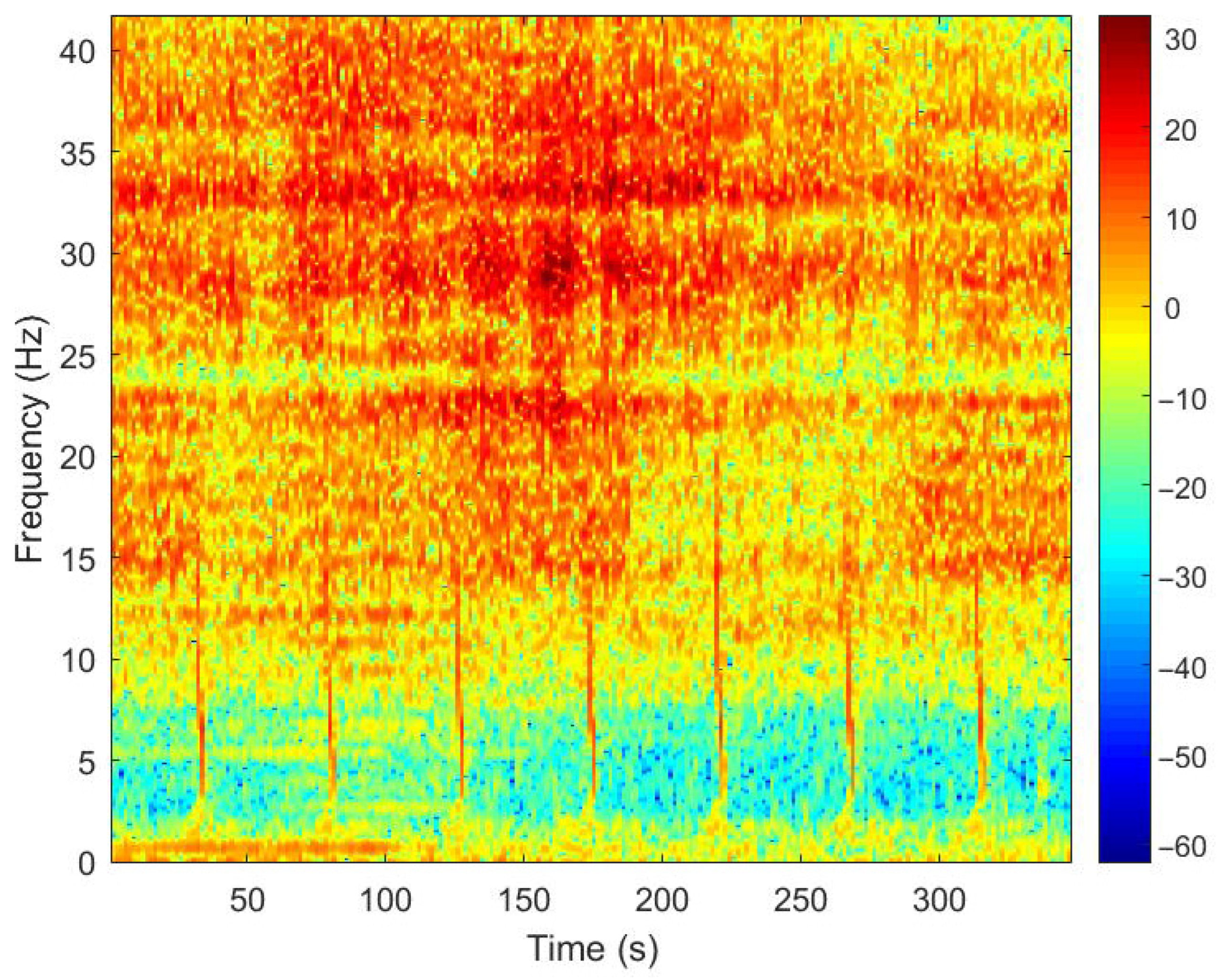

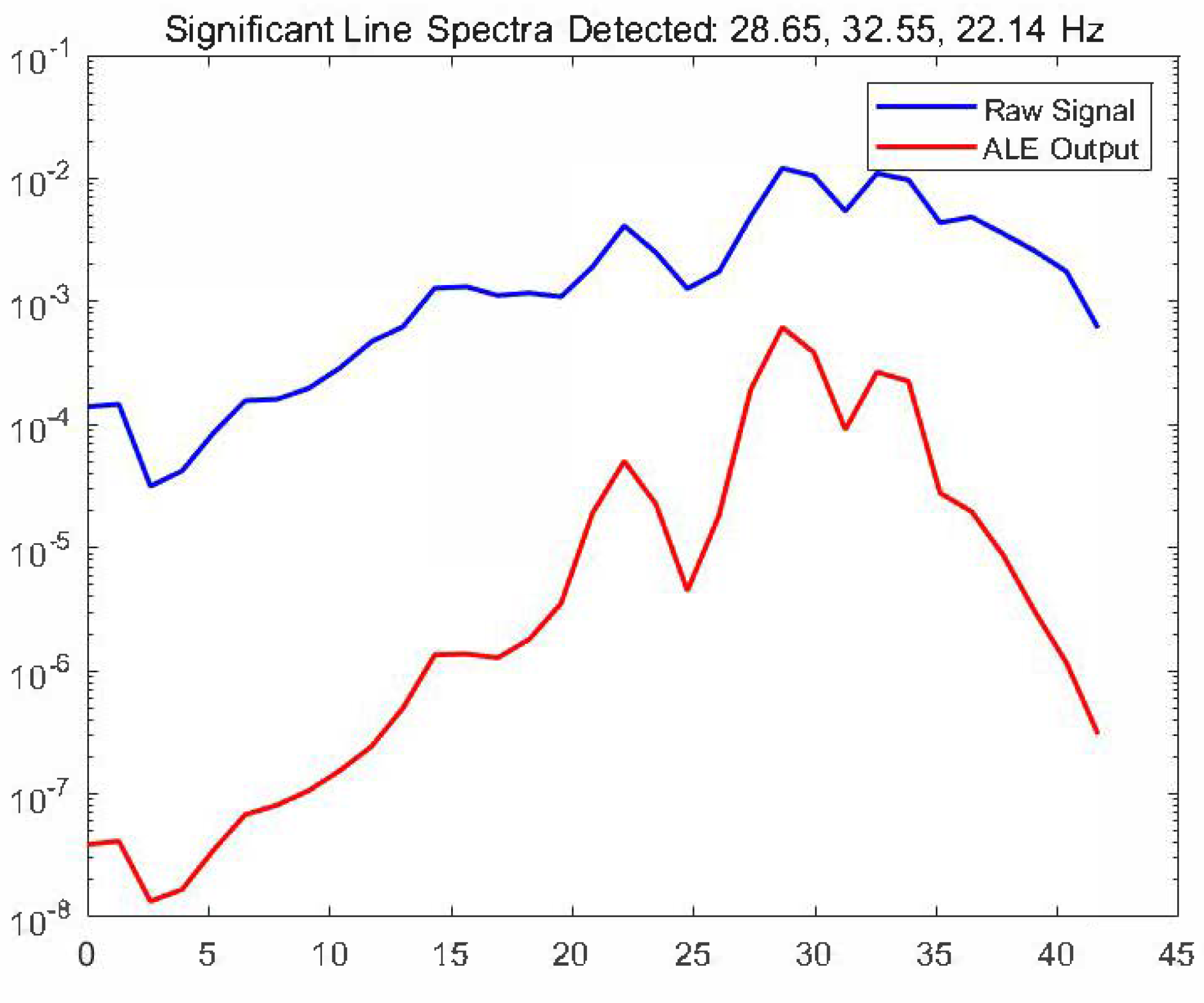
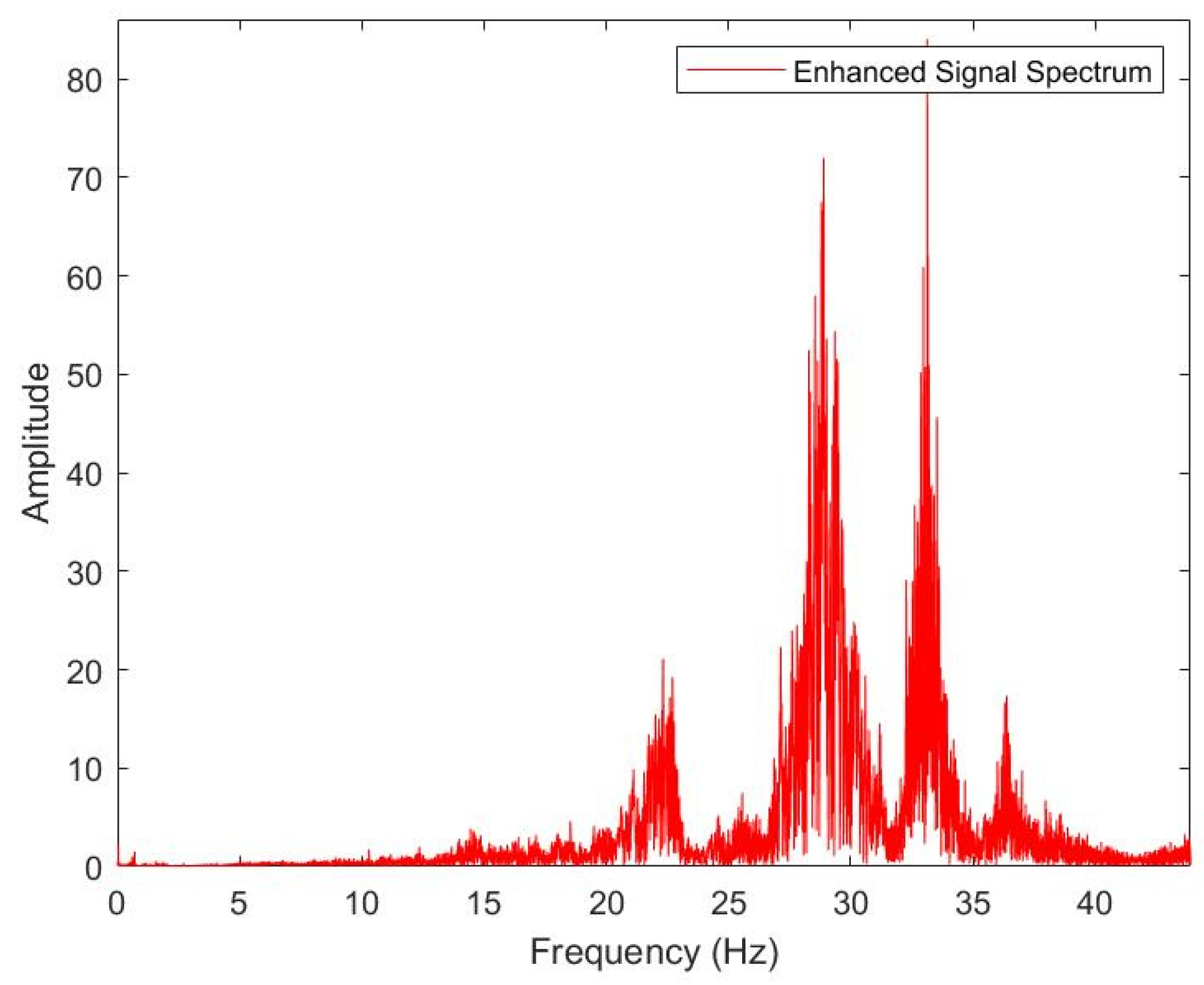
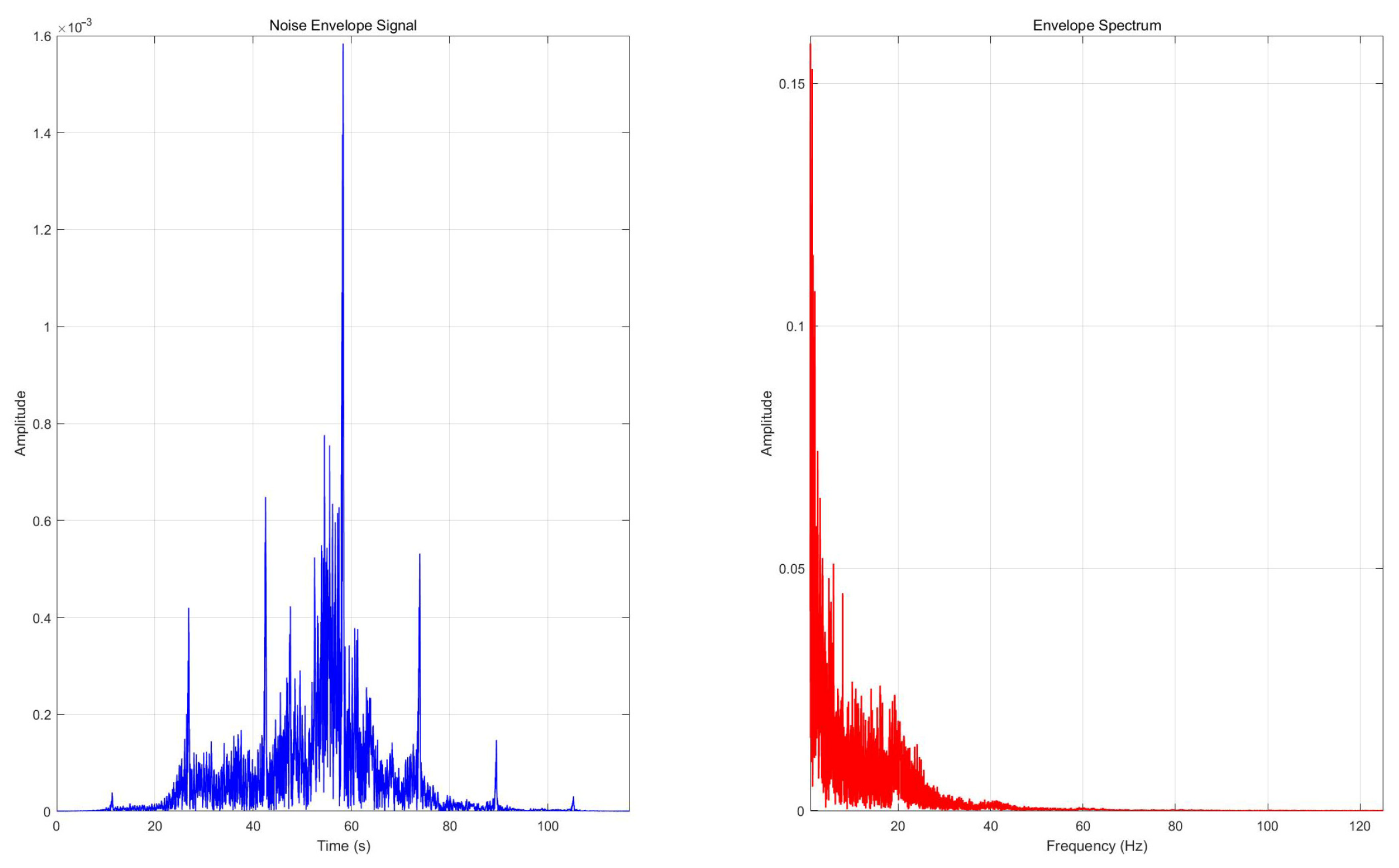

| Parameters | Performance | Unit |
|---|---|---|
| Sensor Type | High-performance geophone | |
| Axes | Upward/northward/eastward | |
| Sensitivity | 250 | V/m/s |
| Clipping Level | 30 | mm/s |
| Bandwidth | 1–300 | Hz |
| Dynamic Range at 1 Hz | 110 | dB |
| Cross-Coupling | <1% | |
| Non-Linearity at 10 Hz | <0.5% of the maximum signal level | |
| Temperature Range | 40 ± 55 | °C |
| Cold Start Time | About 2 min, depending on the bandwidth | min |
| Maximum Installation Tilt | Any angle | ° |
| Spirit Leveling/Mass Locking | Not required | |
| Inherent Noise | 100 | nm/s |
Disclaimer/Publisher’s Note: The statements, opinions and data contained in all publications are solely those of the individual author(s) and contributor(s) and not of MDPI and/or the editor(s). MDPI and/or the editor(s) disclaim responsibility for any injury to people or property resulting from any ideas, methods, instructions or products referred to in the content. |
© 2025 by the authors. Licensee MDPI, Basel, Switzerland. This article is an open access article distributed under the terms and conditions of the Creative Commons Attribution (CC BY) license (https://creativecommons.org/licenses/by/4.0/).
Share and Cite
Xiao, D.; Zhu, Q.; Zhang, J.; Xie, T.; Ji, Q. The Design and Data Analysis of an Underwater Seismic Wave System. Sensors 2025, 25, 4155. https://doi.org/10.3390/s25134155
Xiao D, Zhu Q, Zhang J, Xie T, Ji Q. The Design and Data Analysis of an Underwater Seismic Wave System. Sensors. 2025; 25(13):4155. https://doi.org/10.3390/s25134155
Chicago/Turabian StyleXiao, Dawei, Qin Zhu, Jingzhuo Zhang, Taotao Xie, and Qing Ji. 2025. "The Design and Data Analysis of an Underwater Seismic Wave System" Sensors 25, no. 13: 4155. https://doi.org/10.3390/s25134155
APA StyleXiao, D., Zhu, Q., Zhang, J., Xie, T., & Ji, Q. (2025). The Design and Data Analysis of an Underwater Seismic Wave System. Sensors, 25(13), 4155. https://doi.org/10.3390/s25134155






